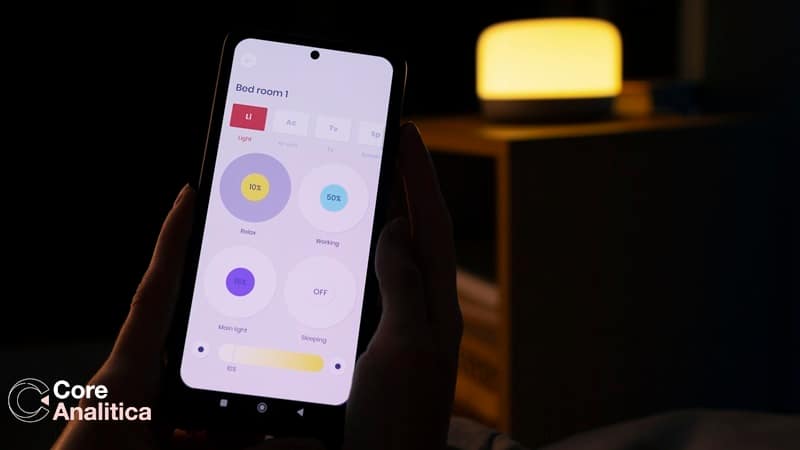
Microsoft Power Apps + Microsoft Fabric: Building Smart Business Apps on a Unified Data Foundation
As businesses accelerate their digital transformation, the demand for applications that are both data-rich and quickly deployable has never been greater. Microsoft Power Apps, the low-code app development platform within the Power Platform, enables organizations to rapidly create custom business apps. When combined with the capabilities of Microsoft Fabric, Power Apps becomes even more powerful, leveraging a unified data foundation, enterprise-grade analytics, and AI to build smarter, more scalable applications.
What Is Power Apps?
Microsoft Power Apps is a low-code platform that allows users, both business professionals and developers, to build applications for web and mobile, with minimal coding. With Power Apps, organizations can digitize manual processes, automate workflows, and empower employees with tailored solutions, all while ensuring governance, security, and scalability.
But the true potential of Power Apps is unlocked when it connects to the broader Microsoft data ecosystem, especially Microsoft Fabric.
Fabric: The Intelligent Data Backbone
Microsoft Fabric is Microsoft’s unified data platform that brings together data engineering, data warehousing, data science, real-time analytics, and business intelligence, all under one environment. It centralizes all organizational data in OneLake, supports multiple engines like Data Factory, Synapse, Power BI, and enables both batch and real-time analytics at scale.
By integrating Power Apps with Fabric, developers and business users can build applications that not only collect and process data, but also activate insights directly from centralized, governed datasets.
How Power Apps Integrates with Microsoft Fabric
Access Data from OneLake
Power Apps can connect to OneLake, the unified storage layer of Microsoft Fabric, through standard connectors or APIs. This allows apps to read from and write to Fabric Lakehouses or Warehouses, enabling real-time and historical data access in a secure, consistent way.
Use cases include:
- An app that captures inspection data and saves it to a Fabric Warehouse table
- A form that retrieves historical data from a lakehouse for context-aware decision-making
- Embedded lookup fields powered by semantic models created in Fabric
Display Fabric-Powered Insights in Power Apps
With Power BI Embedded integration, apps built in Power Apps can display Fabric-based dashboards and reports. This creates experiences where users not only input data, but immediately see how their actions impact KPIs, trends, or forecasts—without leaving the app.
For example:
- A sales app that shows pipeline projections driven by DirectLake-powered Power BI reports
- A logistics app that alerts the user when delivery metrics drop below service-level thresholds
Trigger Workflows with Data Factory and Power Automate
Power Apps can initiate Data Factory pipelines or Power Automate flows that are part of a Fabric-driven workflow. This allows for full-cycle automation, from capturing data to transforming it to reporting it, using connected low-code and pro-code services.
Examples:
- Submit a record in Power Apps → Trigger a Fabric pipeline to enrich the data → Notify the user when enrichment is complete
- A request app that kicks off an AI model inference job in Fabric and shows the result in real time
Leverage Shared Security and Governance
Fabric and Power Apps share the same identity model (Azure AD/Entra ID) and governance layers. This means:
- Role-based access can be centrally enforced
- Data Loss Prevention (DLP) policies apply across both platforms
- Auditing and compliance are consistent and enterprise-ready
Users see only the data they are allowed to access, and IT retains control without slowing down innovation.
Real-World Scenarios of Fabric + Power Apps
This integration unlocks powerful end-to-end use cases:
Operations Dashboard with Embedded Action
A manager views a Power BI dashboard powered by Fabric Warehouse. A Power Apps form is embedded beside the chart, allowing them to initiate corrective actions (e.g., reschedule a shipment) directly from the data.
Finance App with Centralized Metrics
An internal finance app pulls actuals and forecasts from Fabric datasets, enabling employees to submit budget adjustments based on current trends, complete with real-time validation rules.
Data Collection + AI Insight Loop
A field technician enters site data via Power Apps. The submission triggers a Fabric workflow that scores the data using an ML model. The app retrieves the result and provides recommendations to the technician—powered entirely by Fabric.
A Foundation for AI and Business Innovation
As Fabric expands its native AI capabilities: Copilot, AI Agents, and intelligent data modeling, Power Apps becomes the natural front-end for these insights. It’s where users act on data, supported by governed intelligence and real-time feedback.
The combination of Power Apps and Microsoft Fabric gives organizations:
- A low-code front-end for business processes
- A high-performance backend for centralized analytics
- A governed, secure, and scalable platform for building modern business apps
Microsoft Power Apps and Microsoft Fabric form a powerful duo for building intelligent, data-driven applications. Power Apps delivers the agility and simplicity to create tailored business solutions, while Fabric provides the data, analytics, and AI infrastructure to drive smart decisions at scale.
Together, they empower organizations to transform processes, bridge the gap between data and action, and create a culture where every employee can act on insight—securely, quickly, and effectively.

